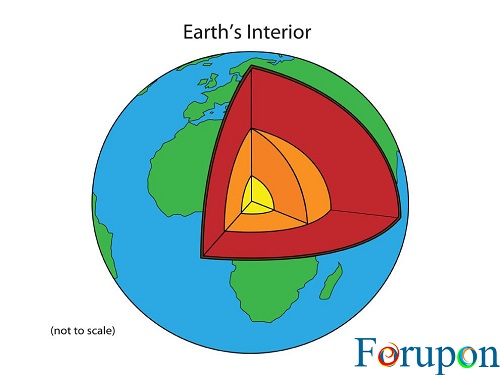Earth’s Interior
For upon |Earth’s core is the very hot, very dense center of our planet. The ball-shaped core lies beneath the cool, brittle crust and the mostly solid mantle. Click through the gallery to learn more about the core and the rest of Earth’s interior.
Earth’s Size
The core is found about 2,900 kilometers (1,802 miles) below Earth’s surface and has a radius of about 3,485 kilometers (2,165 miles).
Cutaway Earth
The core was formed during the “iron catastrophe,” a pivotal moment in Earth’s history when the planet heated past the melting point of iron, and droplets of heavy metals gravitated toward the center of the churning sphere. Lighter elements, mostly silicates, emerged as the early mantle and crust.
Mantle and Core
Earth’s core has three parts: the outer core, the inner core, and the newly discovered inner inner core. The outer core is liquid iron, while the inner and inner inner core are solid iron-nickel alloy. The iron crystals of the inner inner core are entirely discrete from the inner core—running east/west instead of north/south. The outer core’s convection currents are influenced by tectonic activity in the crust and mantle, as well as uneven heating in the inner core.
Solar Wind
The spiraling convection currents in the outer core are responsible for Earth’s magnetic field, which protects the planet from toxic particles of the solar wind. Movement in the outer core causes the magnetic poles to shift up to 64 kilometers (40 miles) every year.
Seismic Shadow Zones
The intense depth, pressure, and temperature of the core make it difficult to study. Scientists primarily use seismographs—measurements of shock waves from earthquakes—to analyze their structures.
Outer Core
Inner Core
Growth in the Inner Core
Inner Inner Core
Dynamo Theory
Earth’s Magnetic Field
Studying the Core

The core is the hottest, densest part of the Earth.
Illustration by Chuck Carter
Subterranean Fiction
Planetary Cores
All known planets have metal cores. Even the gas giants of our solar system, such as Jupiter and Saturn, have iron and nickel at their cores.
The article was originally published here.


Comments are closed.